We've translated our exclusive Gipsyteam interview with Mikita into English. If you're interested, here's the original interview with the One Drop winner.
– When did you decide to take part in the 2023 Big One for One Drop? When choosing such a tournament, do you evaluate only EV or are there other factors?
– EV is the primary factor. If I don’t see a positive expectation, then I definitely won’t be able to enter a tournament in which I need to sell shares. In this tournament, you need to sell a lot of shares and if some players may be interested in playing for personal reasons, then for shareholders the positive expectation of the purchase is a prerequisite.
Further, when there is an understanding that the EV is positive, you need to evaluate many other variables, and almost all of them worked rather negatively in my eyes. For example, the complexity of selling shares and a large number of related transactions. I took into account two positive factors. Even if I beat the rake by only a couple of percent, and my expectations are low, I think that this rake cannot be compared with the classic rake of other series, because here it goes to charity. Even if I play micro-plus for myself, (50k of my buy-in will go to charity) it will already be worth the time and effort spent. Another positive factor for me was the additional motivation to do theoretical preparation for a month before such a major tournament. I've been playing poker for 15 years and am currently in my comfort zone, so it's hard for me to find the motivation to work on the game for even half the time that the young and hungry generation is ready to spend. Therefore, I try to artificially create motivation, and planning to participate in this tournament helped me with this.
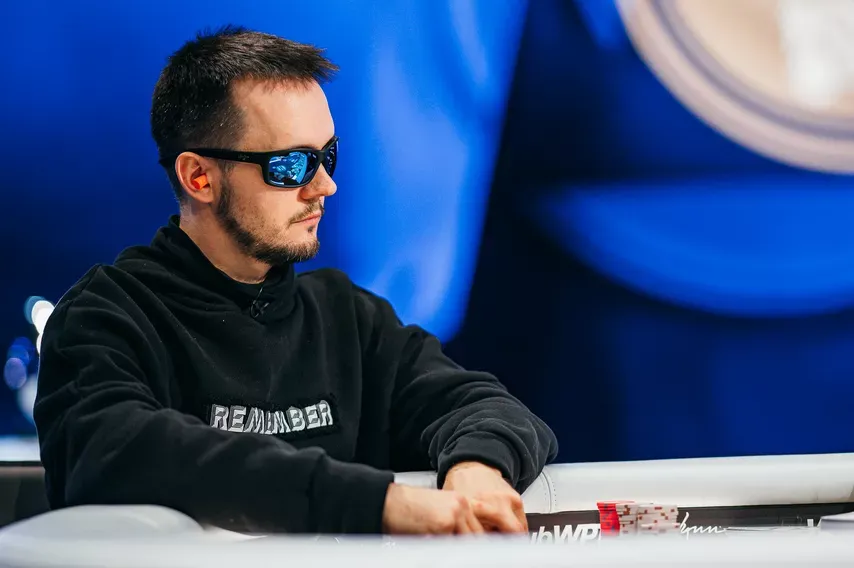
– Can you reveal how much of the buy-in from this WPT event came from yourself?
– I don’t want to give exact numbers, but, of course, both I and all the other professionals had a small share of themselves. With the current number of high-roller tournaments, the load per year is more than 8 million in buy-ins, and therefore it is worth carefully approaching the amounts that can be lost if the situation goes wrong. This is important from a bankroll management point of view, but even more important for my own psychological state, which I have come to value more over the years. At some point, I caught myself thinking that when I played millionaires in the 18th and 19th years, I paid a larger share myself then than I do now. I think the point is that I just got older, and the length of time spent with the existing bankroll also affected me. When you are 25 and have just recently won some amount of money, it doesn’t feel 100% yours, and the prospect of losing it is much easier to accept than when you are used to financial security.
– How did you sell your shares and how do professionals get into such a tournament?
– In high-roller tournaments, many people are now backed. Several wealthy businessmen, who themselves often play tournaments for 25-200k, scored themselves plus or minus five “horses”. Even some of the world's top players have been tempted by the prospect of removing financial risk from their lives, because the annual workload in high-roller tournaments, as I said, is very high. Personally, I still prefer to simply sell shares, thereby avoiding the burden of any obligations if I am in a make-up.
I, like most professionals, including those on backing, sold shares according to the same scheme. We all had a very similar list of shareholders. Without naming names, there is one respected pro who played in this tournament. Everyone trusts his judgment regarding markup assessments for all players. Therefore, most shares are sold with the description “according to the markup of person X,” and in this situation, shareholders do not need to worry about their ability to evaluate the profitability of the purchase. They know that they are getting the same deal as all other shareholders and their interests will be protected by this “person X”, who will determine a fair markup.
In such a tournament, it was generally very profitable to buy shares from a large list of professionals, because with a small number of entries, when you reach coverage of about 1/3 of the field, additional share purchases do not increase the variance, but reduce it. That is, some people had shares, for example, from eight professionals and thereby ensured a relatively low spread of possible results with each share being positive.
– What about the exchange of shares between players? Did you have any swaps in this tournament?
– Yes, there is a group of regs with whom I have been trading shares for many years. Swaps are very helpful in reducing the impact of displacement in high-roller tournaments. It was the swaps that helped me at the last Tritons, in which I performed very poorly, but partially got away with it, thanks to them. It is also worth noting that trades can always create suspicious situations at the final tables, as players may have a direct financial motivation for soft play, so I personally always keep at least four times more action from myself than from any of my colleagues. Well, I hope that other regs do the same. Because even when a person tries to play fairly against all participants, it is difficult to try hard to knock out a person when for you it is clearly a minus in terms of money. Fortunately, almost all final tables televise the cards, which reduces the risk of soft play.
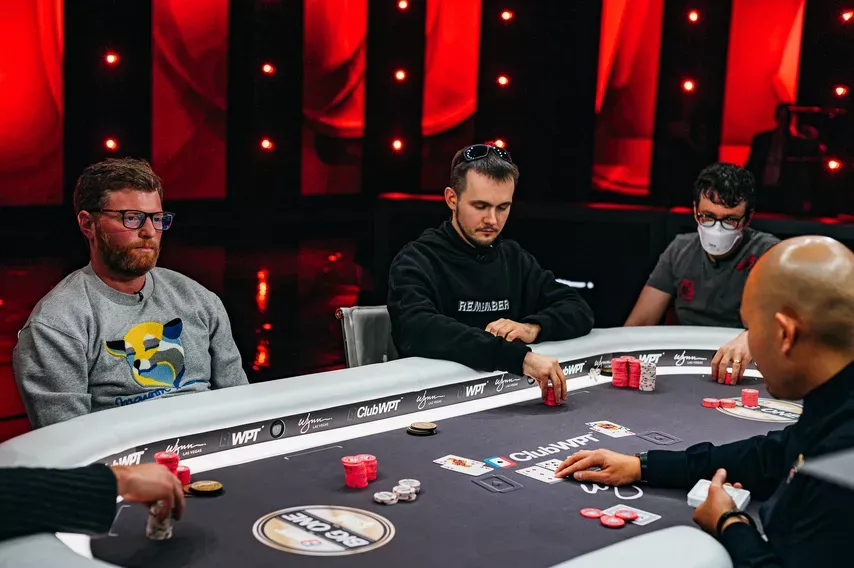
– How different are the top regs who participated in this tournament from each other?
– If we take the top 10 of this tournament, then eight of them took part in the 2018 One Drop. A rather unusual situation in the sense that there were no top regs of the new wave in this tournament at all. That is, most of the regs of this tournament are players from the pre-solver era, but at the same time, for the most part, they still try to follow the solvers.
– Who do you consider to be the new wave regs, maybe a few names?
– Poniakov, Martirosyan, Kulev. These top regs didn't play high stakes back in the day, but now they have enough skill to beat the regs in this tournament, and enough recognition for the quality of their play to sell stakes.
– How did the path to the final table turn out for you? Do you learn anything new during such tournaments?
– The entire tournament until the finals we played with very deep stacks at 5 or 6-max tables with a 15-second time limit preflop and a 30-second time limit postflop. Coupled with the size of the buy-in, such a game carries a lot of weight and is very draining. It also allows you to collect many interesting hands for future analysis. I always record a lot of hands from each tournament for analysis, but this one had more than usual. The tournament is special, the hands are more important, and there is more emotional attachment to them, which will certainly be beneficial since their analysis will be better remembered.
– Can you share any of the hands you recorded?
– 10 minutes had passed since the start of the tournament. Stacks were 330bb. Petrangelo raises 3bb from the button, I re-raise 15bb from the small blind with AQo, and he calls. The board is rainbow, then a brought a flush draw and an off-suit was the river card. I bet 20% of the flop and we then checked against him. I had .
This is a spot where I should c-bet 100% of the time and mix small bets and flop overbets into my range. 40% of the time, the solver places a continuation bet of 150% of the pot, which is 45 bb, after which the hand will often continue to bet.
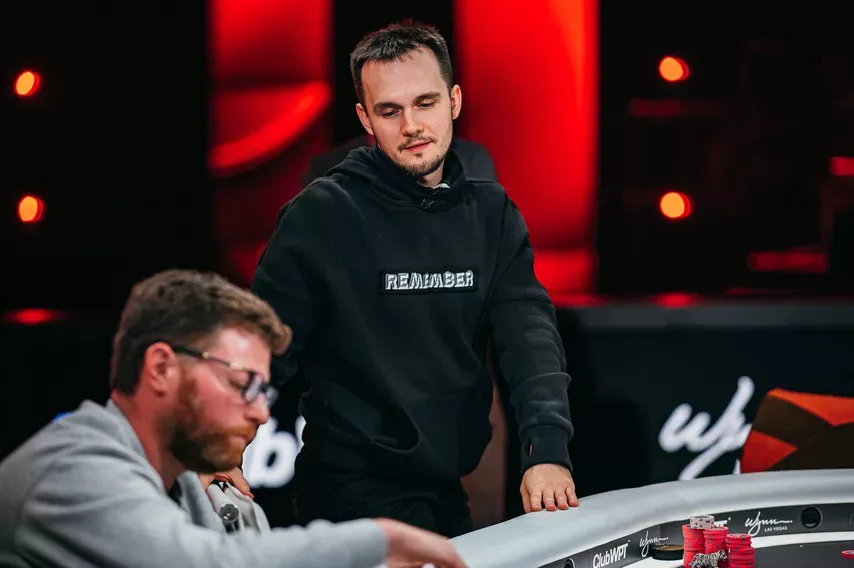
Next, the turn is also a very interesting street, because in addition to check-calling, you can play both an overbet and a check-raise, and both lines can again lead to elimination. A fun prospect is to sit in a million-dollar tournament, bluff your stack in the second round, and write to investors that tens or hundreds of thousands of their dollars was torched in 10 minutes :)
– Let’s now discuss the hands from the final table, fortunately they are all available on YouTube with open cards, and are also in our review of the 2023 One Drop.
When you held , is there really a calling option? I, like many, would instantly throw away that low pair.
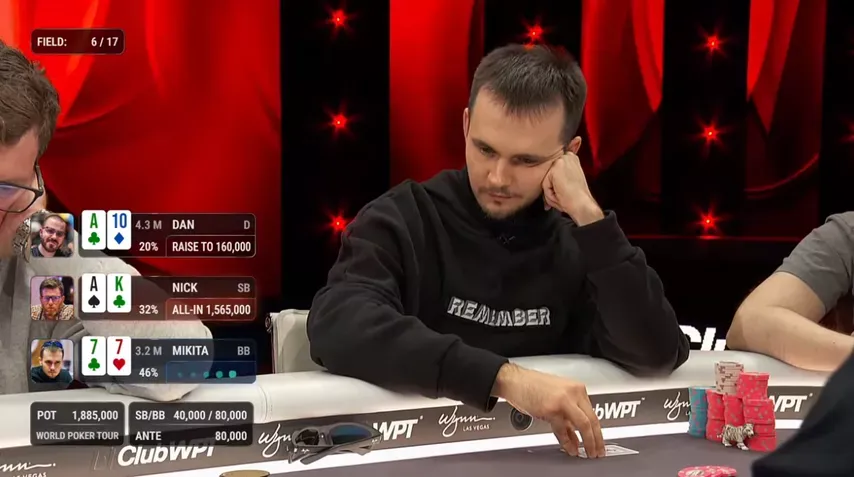
– Yes, it was a very close hand, and according to the calculator, the call with will be the lower limit.
It turned out funny. The night before the tournament, I ran several simulations. I figured out the most realistic scenario for the moment when I am in the BB – SB will have 16 bb, and I will have 36, and then with I definitely have to close the action. But in reality, both the SB and I had won pots before, and he had 20bb and I had 41, which of course narrowed the calling limits. I figured that would be a marginal hand and could be a weak plus call, but several additional factors swayed me to fold this hand.
However, when you think about additional factors and such decisions, it is important to try to honestly answer yourself whether the buy-in of the tournament influenced this. There are always different arguments for and against, and the brain often biases you toward points from only one group, in fact, pushing you toward a more comfortable choice. Going into this final table, my main mindset was to prepare for elimination before the cash, so that no pressure would prevent me from making a cool decision. So, in the first hand of the day I was dealt A5s, and I was ready to be eliminated in the first hand.
– Call pushing with A7o against Petrangelo. You thought for a few minutes; How close is this spot, what were you thinking about and were there any doubts?
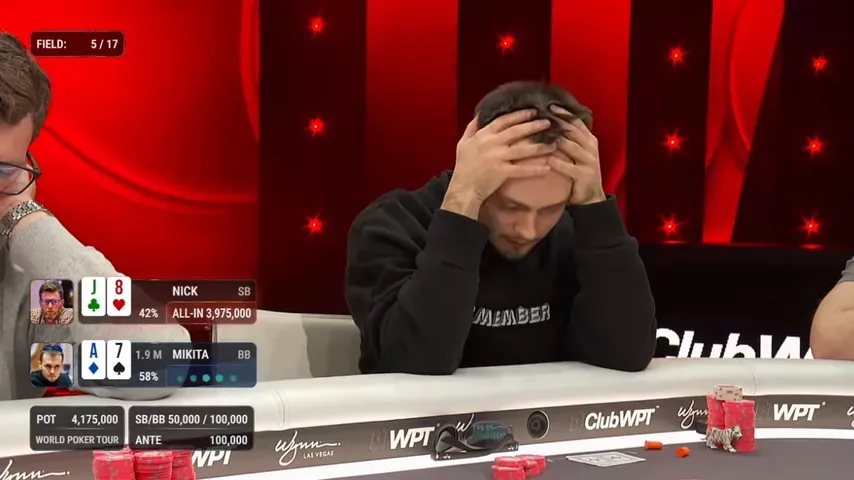
– In this hand, I immediately felt that I had to give up and call. I almost always take extra time to calculate everything more accurately and confirm my choice. According to the calculator, I can call from A6o.
– BB vs SB vs Petrangelo, you call his raise with ATo, on the board . He c-bet the flop and overbet all-in for just under a pot and a half on the turn. Your calling the flop and folding the turn are, of course, standard, but for his J8o the line seemed very strange to me. Is this some kind of leveling against you personally?
– In his place, such a line would rarely be used, especially in ICM, precisely because he approached the turn in a very awkward SPR. But at the same time, I can understand his logic: he wanted to kill the equity draw and play against the king, blocking other matches, even though this is not a solver hand.
– Is isolating with a shove versus limping heads-up with Q2o standard?
– Yes, this is a standard push with 50% weight for 15 bb with 1 bb ante. When preparing for a tournament or even a final, there are always priority things to repeat, and therefore it never comes down to HU ranges. And then you find yourself in the HU of a major tournament and suddenly realize that you haven’t seen these ranges for six months. But I was lucky that I more or less remembered them.
– Heads-up on the board On the river you seemed to pretend to fold your cards and then thought for a full 30 seconds. Are these little tricks or did you just mix the cards and accidentally let one of them go further than necessary? And how much do you like Mosbeck's line of check-raising the turn without equity and bluffing?
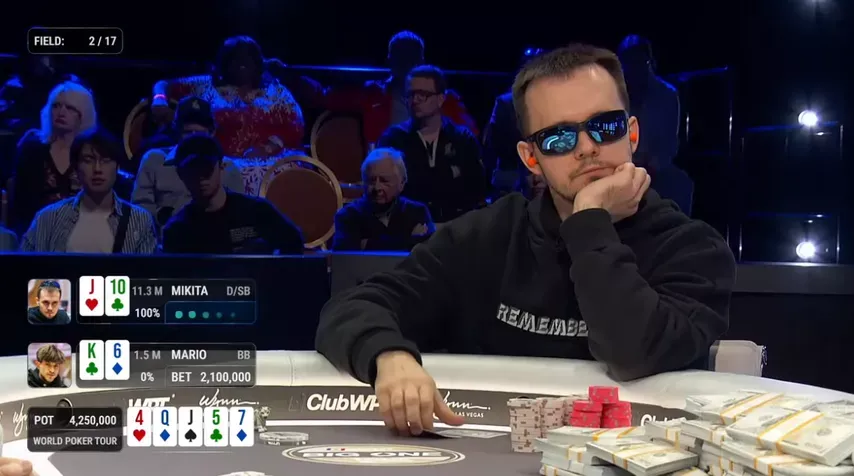
– I watched it on video; It seems to me that my shuffle of cards was far from being perceived as a fold. But overall, I was going to fold and so I shuffled the cards like a hand that I fold. I just knew that I would throw away the bluff catcher through because on this board, blocks his potential bluffs. The solver always folds the turn, but his bluff worked very effectively, and therefore I can only say – nice bluff :)
– What were your feelings and thoughts after the victory?
– I didn’t experience any huge euphoria. I think there are three reasons for this. The first is that the brain immediately focuses on an important and complex task: how, where, and when to calculate all the shareholders, of whom I had 10+ people. The series ends, both I and they fly away within 1-2 days, and we urgently need to calculate everyone’s share and distribute their money to everyone. The second reason is the understanding that it looks like a huge prize and a big success, but in reality, it is only 7 buy-ins that are constantly won and lost in both directions and just create turnover. In practice, the main marker of my earnings is the markup that shareholders pay me. Well, the last reason is that the main satisfaction comes later, after a week when you have closed all financial calculations and realize that you have earned yourself a reserve. This is how I perceive any winnings: as an opportunity to perform unsuccessfully during the next X number of tournaments and not worry about the amounts that I can lose.
– Thank you for agreeing to the interview! Congratulations again on your victory!
– And thank you, and also thanks to everyone who supported me, and everyone who was happy about my victory in this tournament :)














